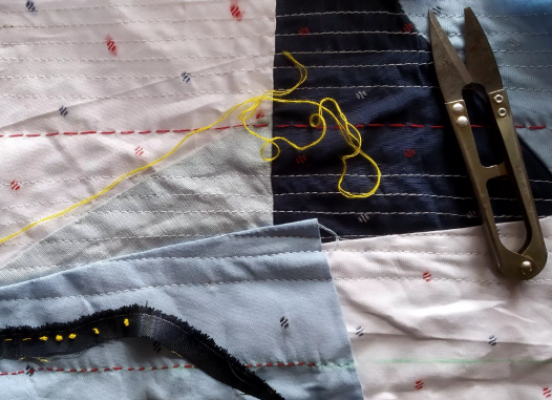Textile Pollution- What’s Next?
“Fast fashion is like fast food. Post the initial sugar rush, it just leaves a bad taste in your mouth.”
– Livia Firth
Textile Pollution
Fashion is one of the most polluting industries in the world, second only to the oil industry. 20% of water pollution is due to garment manufacturing, and 85% of all clothing ends up in landfills.
As per existing data, 4% of Bengaluru’s Municipal Solid Waste is textile waste. That’s 220 tonnes of textile waste generated by Bengaluru every single day.
Existing Solutions
Upcycling adds value to waste fabric by creating new products from it.
Only some clothes can be recycled.
In recycling, textile waste is first segregated by color and size. It is washed, processed, shredded to smaller pieces, converted into stable fibers, turned to thread, and finally new fabric.
Only cotton/polyester commonly get mechanically recycled. We lack the technology to separate different fibers, so recycling is not feasible for clothes with mixed fabrics and these should be avoided.
Lack of Government policies leads to textile recycling falling short in two big ways:
- There is no authorized textile waste data even for the big brands.
- There is also no reverse logistics in place to routinely collect pre and post-consumer waste and recycle it.
Big Guns Getting in on the Act
Many retail giants are taking action to make their products more sustainable. Nearly three-quarters of Nike footwear now contains materials made from its manufacturing waste. H&M is investing in recycling technology and offering points to customers who deposit old clothes.
Closer home, Bhaane is a brand that actively tries to source recycled handwoven fabrics.
SZW and Circular Textiles
As a recognized member of the United Nations’ Business Call to Action (BCtA), we work towards achieving Sustainable Development Goals (SDGs).
SDG 12 – Responsible Production and Consumption means we only create and support sustainable products that are made under fair working conditions.
2019 marked the start of our venture into circular textiles. It began as a pilot with a garment manufacturer Aquarelle.
We were able to make 30 different products from their textile waste, and these were brought back into the market or used for corporate gifting.
We are also working on a pilot basis with India’s first billion-dollar fashion powerhouse Aditya Birla Fashion Retail to understand the problems better. We aim to holistically reduce and sustainably handle their waste.
For this we identified self-help groups, primarily consisting of women in rural regions of Karnataka, who can benefit from the employment. These SHGs add value to textile waste by making new bed-covers, laptop bags, sleeves, and other products from it.
SZW Textile Vision
SZW aim to be the go-to platform for sustainable textiles – getting export houses on board to source recycled fabrics, facilitating recycling/upcycling, and raising consumer awareness.
SZW want to create a systemic shift by designing an efficient value chain and formalizing the current informal ones.
Consumer Awareness
Worldwide, consumer demand is of utmost importance to curb textile pollution. Enthusiasm by brands to venture into sustainable fashion is only an attempt at catering to raised consumer awareness.
Until sustainable fabrics are economical for everyone; buy less, pay more, and value the story your clothes tell.
To know more, please check Saahas ZeroWaste.

